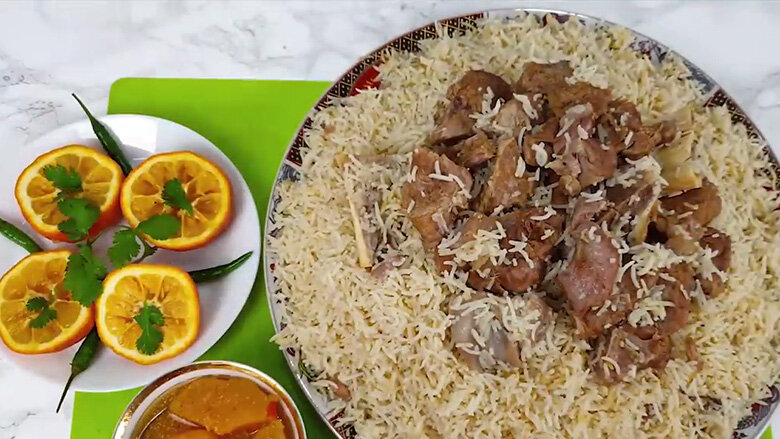

TEHRAN – Yakhni Polo, which is an Iranian lamb stew, is now a step closer to win national heritage status. The fatty dish is very popular in Dargaz, northeastern Khorasan Razavi province.
An all-inclusive dossier, including documentation and essential records, has been developed for the dish, which is also favored in the Indian subcontinent, parts of southern Asia, and the Balkans.
A native flatbread and the skill of making a sweet pudding are other elements the cultural heritage office of Dargaz seeks to add to the national list of intangible cultural heritage, a local official Mohammad Madadi said on Wednesday.
“Traditional foods of Yakhni Polo (a combination of lamb and rice, which is also popular in India and Pakistan) and a kind of local bread as well as the skill of making samanu (sweet pudding made entirely from germinated wheat) are one step closer to possibly be added to the National Heritage list,” he said.
As Dargaz is a city with a history of seven thousand years and a rich culture and valuable traditions, several items could be identified and registered as intangible cultural heritage, the official added.
He also noted that so far several dossiers have been prepared for various properties and items in the city to be registered on the national heritage list.
Stews are a big part of Iranian cuisine. Ghormeh Sabzi along with Fesenjan and Gheimeh are an essential part of the culinary tradition of the nation and also the most common stews cooked by all Iranians both at homes and restaurants.
Iranian cuisine, usually dominated by fragrant herbs, varies from region to region. It principally accentuates freshness, deliciousness, and colorfulness.
Experts say that food is not merely an organic product with biochemical compositions. However, for members of each community, food is defined as a cultural element.
No Persian meal is complete without an abundance of herbs. Every table is usually set with sabzi khordan, a basket of fresh herbs, radishes, and scallions, which are eaten raw and by the handful. Persian cuisine is, above all, about balance — of tastes and flavors, textures and temperatures.
ABU/ AFM
 RSS Feed
RSS Feed















 December 24th, 2020
December 24th, 2020  Awake Goy
Awake Goy  Posted in
Posted in  Tags:
Tags: 













